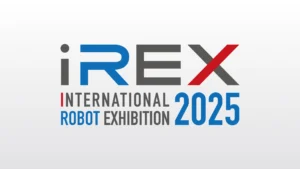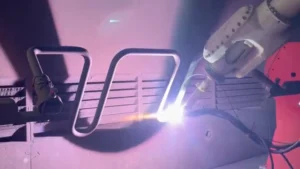table of contents
- Heading 1
- Heading 1
- Heading 1
share this
(Image Source: Yaskawa Motorman)
They say programming industrial robots is only for seasoned professionals. But is it really? Yaskawa Motoman robots might just prove that wrong. With the right guidance, even the new ones to robotics can begin programming these powerful machines. In this guide, we’ll break down the essentials of Yaskawa Motoman robot programming for beginners. We’ll also explore the methods that make programming easier and more accessible.
What Are Yaskawa Motoman Robots?
Yaskawa is a leading Japanese manufacturer of industrial automation components. Their Motoman robots are one of their flagship products that include a wide range of robots designed for various tasks. They can handle simple pick-and-place operations to complex welding and assembly jobs. These robots have become integral to industries requiring high precision and reliability levels.
Types of Yaskawa Motoman Robots
The versatility of Motoman robots is reflected in the different models and types available. Let’s see the different types:
1. 6 Degrees of Freedom (DoF) Industrial Arms:
These robots are designed for tasks requiring a broad range of motion. They are commonly seen in material handling, assembly, and other industrial applications.
2. SCARA Robots:
Known for their high-speed operation, SCARA robots are often deployed in assembly, packaging, and small parts handling. These robots can significantly increase efficiency on production lines.
3. Collaborative Robots (Cobots):
Cobots are perfect for environments where space is shared between humans and machines. They come with advanced sensors and safety features to prevent accidents and enhance human-robot collaboration.
4. Dual-Arm Robots:
Dual-arm robots are ideal for tasks that require two-handed coordination, similar to human actions. They excel in complex assembly, manipulation, and multi-tasking, such as holding and working on objects simultaneously or interacting closely with humans in collaborative environments. These robots enhance efficiency in processes like assembly, sorting, and packaging by mimicking the versatility and precision of human hands.
What Programming Language Does Yaskawa Motoman Robot Use?
Programming is the foundation of robotics, and Yaskawa Motoman software uses a programming language called INFORM. This Yaskawa robot programming language offers detailed control over their movements and tasks. INFORM is a structured language that combines elements of traditional programming and command-based scripting, making it both powerful and flexible.
Key Features of INFORM
INFORM is packed with features that make it a versatile tool for programming Yaskawa Motoman robots. Here are some of the key elements that define this language:
Command-based Programming:
INFORM allows programmers to create programs by writing commands to define the robot’s movements and actions. For example, a basic command like “MOVJ P1” instructs the robot to move in a joint-interpolated motion to position P1.
Comprehensive Functionality:
The language provides a wide range of commands. It covers everything from basic movements (“MOVL” for linear movements) to complex tasks like welding (“ARC ON”, and “ARC OFF” for controlling welding arcs). INFORM also supports conditional statements (“IF”, “THEN”, “ELSE”), loops (“FOR”, “WHILE”), and other programming constructs. Together, you can create sophisticated automation sequences.
Integration Flexibility:
Despite being a proprietary language, INFORM allows integration with other systems. This makes it versatile for different industrial setups. For instance, Yaskawa robots can be integrated with PLCs (Programmable Logic Controllers) for coordinated control in manufacturing lines.
2 Main Ways to Program Motoman Robots
When it comes to Yaskawa robot programming, there are two primary methods: Teach Pendant Programming and Offline Programming.
1. Teach Pendant Programming
Teach pendant programming is the traditional method of programming industrial robots. It involves using a handheld device to directly control the robot. The teach pendant allows operators to move the robot to the desired positions and record these positions in its memory.
How It Works:
The teach pendant provides a user interface with buttons and a small screen for Motoman robot training. The operators use this device to jog the robot to specific locations. Positions are saved as waypoints and are later linked together to form a complete program. The teach pendant also allows for basic programming, such as setting movement types (e.g., joint, linear) and adjusting speeds.
Pros:
- User-friendly for simple tasks: Moving the robot and recording positions is relatively straightforward.
- Immediate visual feedback: You can see the robot’s movements in real-time and adjust as needed.
Cons:
- Time-intensive: Each movement needs to be recorded manually. This can be slow, especially for complex programs with many waypoints.
- Production disruption: The robot must be taken offline during programming. This can lead to potential downtime.
2. Offline Programming with INFORM
Offline programming allows you to write the robot’s program on a computer using the INFORM language. This method doesn’t need interaction with the physical robot. This is particularly useful for developing and testing complex programs before deploying them on the actual robot.
How It Works:
Programmers use a PC-based Motoman robot programming software called MotoSim EG-VRC to write, simulate, and debug robot programs. The program can then be uploaded to the robot for execution. This helps minimize the need for real-time interaction with the robot. The method allows for advanced features such as collision detection and cycle time optimization during the simulation phase.
Pros:
- Reduces downtime: Since all Motoman software programming is done offline, the robot can remain in production while you develop its program.
- Ideal for complex tasks: It is easier to create and test intricate sequences of commands, especially when working with multiple robots.
Cons:
- Learning curve: INFORM requires time and effort to master. Those new to programming or robotics might find it difficult.
- Debugging required: You still need to test and debug the code on the actual robot. The main debugging is on the positions as there is always a position difference between the virtual cell and real life cell. This however can take some time and adjustments.
Both methods are valuable in robot programming, but they can be cumbersome, especially for those new to robotics. Fortunately, there’s a more efficient and user-friendly option available: Augmentus.
Programming Motoman Robots Easily and Efficiently With Augmentus
Augmentus offers an advanced Motoman robot programming software designed to make programming simpler. This includes industrial robots like Yaskawa Motoman and similar models. It introduces a visual, no-code interface that helps users develop complex robot programs without needing to write any code. Here are some advantages:
Drag-and-drop Interface:
Augmentus offers a straightforward drag-and-drop interface. You can now position the robot and its tools within a simulated workspace. This method removes the need for manual coding and makes programming more intuitive.
Simulation:
The platform provides preview of the robot’s movements, which helps refine the program before it is deployed. This feature allows for quicker adjustments and more accurate programming.
Multi-brand Compatibility:
Augmentus isn’t limited to just one type of robot; it supports a wide range of robot brands. This makes it particularly useful for operations that involve multiple types of robots. This flexibility helps in managing different systems under one platform.
Why Use Augmentus for Motoman Robot Programming?
Choosing Augmentus as your programming solution for Motoman robots comes with several significant advantages:
Intuitive Interface:
Augmentus is designed with a user-friendly interface that doesn’t require a deep understanding of robotics or programming. This makes it accessible to both beginners and experienced professionals.
Maintained Productivity:
Since programming can be done without taking the robot offline, your production lines can continue running, causing no harm to your productivity.
Reduced Risk of Errors:
The visual, no-code programming approach helps minimize common errors that might occur in text-based programming. This makes Augmentus a technology you can rely on.
Cross-platform Flexibility:
Whether you’re working with Motoman robots or other brands, Augmentus allows for seamless integration across different systems.
Conclusion
Motoman robot programming doesn’t have to be complex or time-consuming. In this guide, we’ve broken down Motoman robot programming for beginners. Whether you’re using the traditional teach pendant for Motoman robot training, programming with INFORM, or using Augmentus, there’s always a method for your needs and skill level. For those looking to simplify their operations and programming process, Augmentus provides a highly accessible and efficient solution. Start programming your Motoman robot today with Augmentus and see your systems hit their full potential.
Book a demo session with us now.




